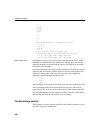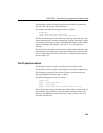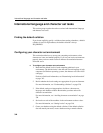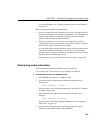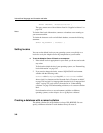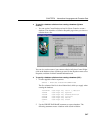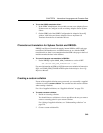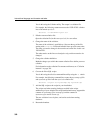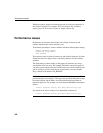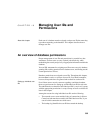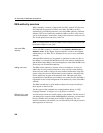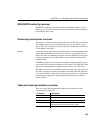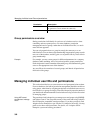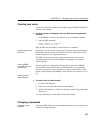
International language and character set tasks
350
You do this using the Collation utility. The output is a collation file.
For example, the following statement extracts the 1252LATIN1 collation
into a file named mycol.col:
dbcollat -z 1252LATIN1 mycol.col
3 Edit the custom collation file.
Open the collation file (in this case mycol.col) in a text editor.
4 Change the name of the collation.
The name of the collation is specified on a line near the top of the file,
starting with
Collation. You should edit this line to provide a new name,
The name you need to change is the second word on the line: in this case
1252LATIN1.
The other entries on this line are descriptive only, and do not need to be
changed.
5 Change the collation definition.
Make the changes you wish in the custom collation file to define your new
collation.
For information on the collation file contents and format, see “Collation
internals” on page 339.
6 Convert the file to SQL scripts.
You do this using the dbcollat command-line utility using the
-d switch.
For example, the following command line creates the mycustmap.sql file
and mycustom.sql files from the mycol.col collation file:
dbcollat -d mycol.col mycustmap.sql mycustom.sql
7 Add the SQL scripts to the scripts in your installation.
The scripts used when creating databases are held in the scripts
subdirectory of your Adaptive Server IQ installation directory. Append the
contents of mycustmap.sql to custmap.sql, and the contents of
mycustom.sql to end of custom.sql.
The new collation is now in place, and can be used when creating
databases.
8 Restart the database.



